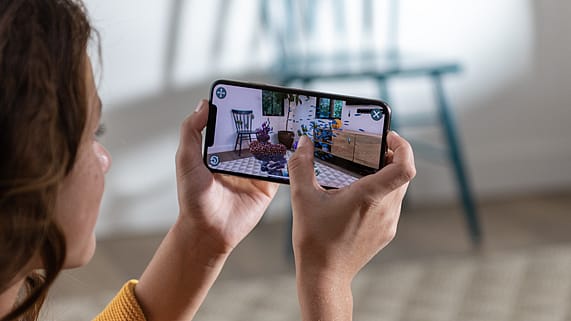Apple hits refresh, iPhones go dual-SIM
ADVERTISEMENT

Apple on Wednesday refreshed its iPhone line-up with three new phones; it also unveiled the latest Apple Watch. But there were three things which made those watching the events from India sit up: one, two of the new phones were to hit Indian shores on September 28; two, both phones would feature dual-SIM support, albeit one being an eSIM, currently offered by Bharti Airtel and Reliance Jio on the Apple Watch 3. The third piece of news was the launch of an “affordable” iPhone X, called the iPhone Xr, which would be available in India from October 26.
Apple also announced a price cut of $100 for the iPhone 7, 7 Plus, 8, 8 Plus, while the Watch Series 3 starting price was cut to $279.
Available in red, yellow, white, coral, black and blue, the Xr features a 6.1-inch LCD screen and supports Face ID. At first glance, the Xr looks like a cross between the iPhone 8 Plus and the iPhone X. The phone—available in 64GB, 128GB, and 256 GB versions—would start at $749, and be a tad smaller than the 8 Plus. The Xr, which runs iOS 12, would be powered by the A12 Bionic processor, that powers its more expensive siblings. Featuring a wide-angle 12-megapixel (MP) camera on the back, the Xr supports wireless charging, while it shares the front 7MP TrueDepth camera with its siblings. Apple’s website mentions that the Xr would also feature dual-sim support, through a software update later this year.
December 2025
The annual Fortune 500 India list, the definitive compendium of corporate performance, is out. This year, the cumulative revenue of the Fortune 500 India companies has breached $2 trillion for the first time. Plus, find out which are the Best B-schools in India.
The first product to be unveiled was the Apple Watch Series 4, which has been redesigned to sport a 30% larger curved display, but a thinner chassis. Because of the larger screen, the new watch faces can sport up to eight complications. The back has been redesigned to bundle in an electrical heart sensor, along with an improved optical heart sensor.
With these new features, the Watch 4, running the new watchOS 5, is able to churn out an echocardiogram (ECG) when a user touches the index finger on the crown for 30 seconds. The new heart sensors also keep a check on your heartbeat, alerting you if there’s any irregularity, so one may seek medical advice. And all data would be added as a PDF to the Health app.
Another feature that Apple debuted was one which could detect if you’d had a fall. If the Watch 4 detects that you’ve had a fall, it goes to the SOS screen, and an SOS call is made, alerting your emergency number as well, if you stay immobile for a minute after the fall. This feature, if it works seamlessly, could be a lifesaver for seniors.
The Watch 4 would be available for $399 for the GPS version, and $499 for the cellular version. It starts shipping in the U.S. on September 21, but Apple hasn’t revealed its India launch date yet. The watchOS 5 update starts rolling out from September 17.
Next, Apple took the wraps off the iPhone Xs, which sports a 5.8-inch screen, and the iPhone Xs Max, which is as big as the iPhone 8 Plus, but sports a 6.5-inch screen—the biggest iPhone screen yet. Both phones are dust- and water-proof and features rounded corners and a curved design.
The new phones have a storage capacity up to 512GB, have a slightly longer battery life than the iPhone X, and a new 7MP front camera, also used in the Xr. The dual cameras are the same 12MP ones from last year, but they feature optical image stabilisation, HDR support, and software enhancements, such as the ability to adjust the depth of field, after the shot has been taken. Available in gold, space grey and silver, the 64GB Xs would sell at $999, while the 64GB Xs Max retails for $1099. All three phones support wireless charging.
Apple also announced the rollout of the latest version of MacOS, the Mojave, from September 24. What was left unsaid is that the company has eliminated the iPhone 6s, the iPhone SE and the iPhone X, as also the Apple Watch Series 1, from its line-up.
